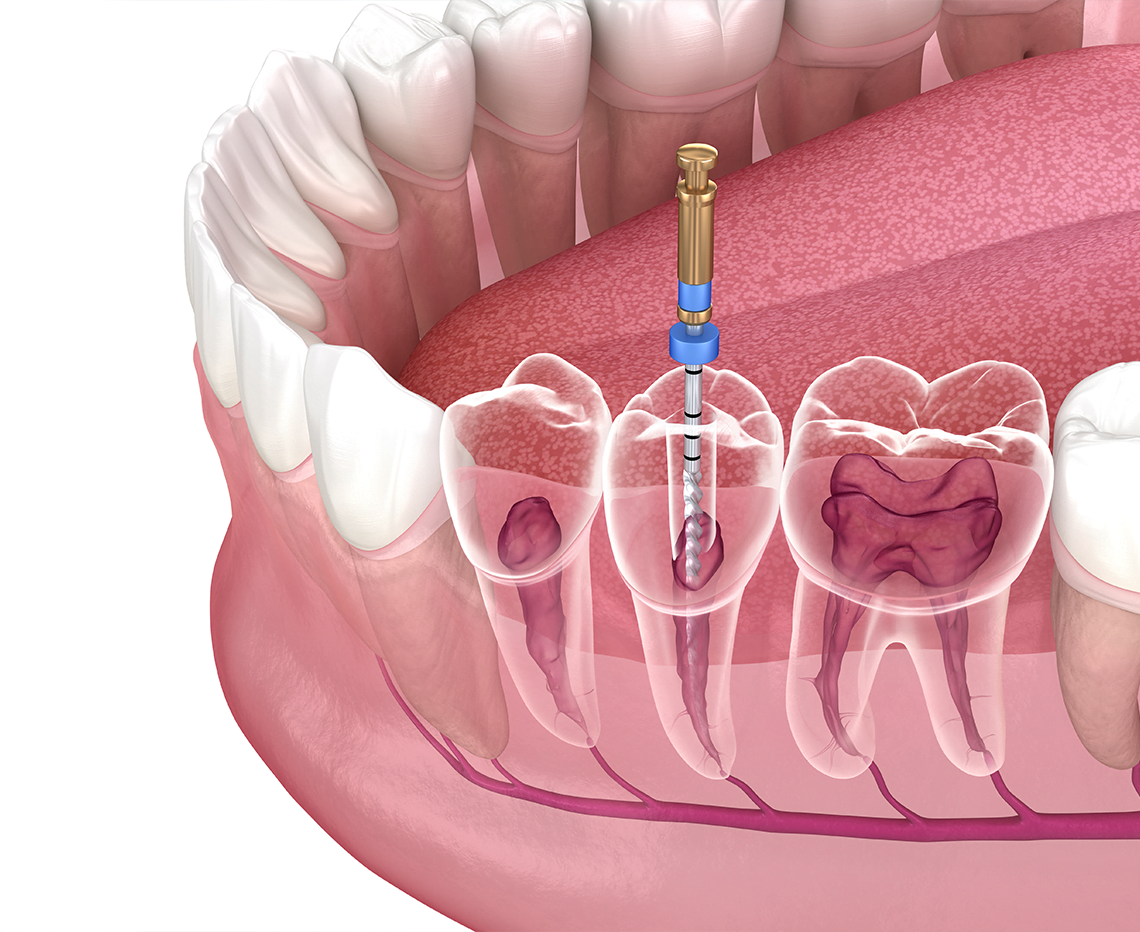
Endodontics
A root canal procedure is performed to restore a tooth’s damaged inside. It is also known as endodontic therapy. It entails making a hole in the tooth and removing the dental pulp, which is the soft interior. The dental pulp extends into the tooth roots and is composed of connective tissue, nerves, and a blood supply. The area is filled and sealed after the pulp has been eliminated. If necessary, it is also possible to replace the crown or chewing surface of the tooth. A qualified endodontist or your general dentist can administer root canal therapy.
What is Endodontics?
Endodontics is the total removal of the pulp; explained very briefly, dental endodontics is a procedure that is carried out to ‘kill the nerve’ of a tooth when it causes us continuous pain and there is no possibility of solving it in any other way. It consists of a cleaning procedure of the root canal system in which bacteria and necrotic tissue are removed to leave the canal as aseptic as possible.
Tooth decay is the main reason for inflammation and infection of the dental nerves. However, there are also other reasons for resorting to this treatment: trauma, fractures, abrasion, and wear and tear, among others.
Depending on the number of canals that the tooth has, one endodontic model or another is identified:
- Uniradicular endodontics. This is carried out on teeth that only have one root or canal. These teeth are usually incisors and canines.
- Biradicular endodontics. This method is performed on teeth with two canals, such as lower molars or upper second premolars.
- Multi-radicular root canal treatment. This is performed on teeth with three or more canals, such as upper molars.
In which cases is endodontics performed?
The dental pulp or nerve of the tooth is located in the innermost part of the tooth, where the blood vessels and nerve endings are located. When it becomes inflamed, usually due to an infection caused by decay, it causes severe pain, swelling, and sensitivity to heat or cold. Treatment of inflammation in the pulp usually requires root canal treatment.
Endodontics is a safe and effective technique. The functionality and natural appearance of your tooth are restored quickly. After root canal treatment, the treated tooth will behave like any other healthy tooth, and only in very few cases will it be necessary to root canalize the tooth. This is usually only done in cases where root canal treatment has not worked as expected, usually due to the inability to remove all the bacteria present in the root canals. In this case, a second cleaning is performed to avoid removing the tooth.



